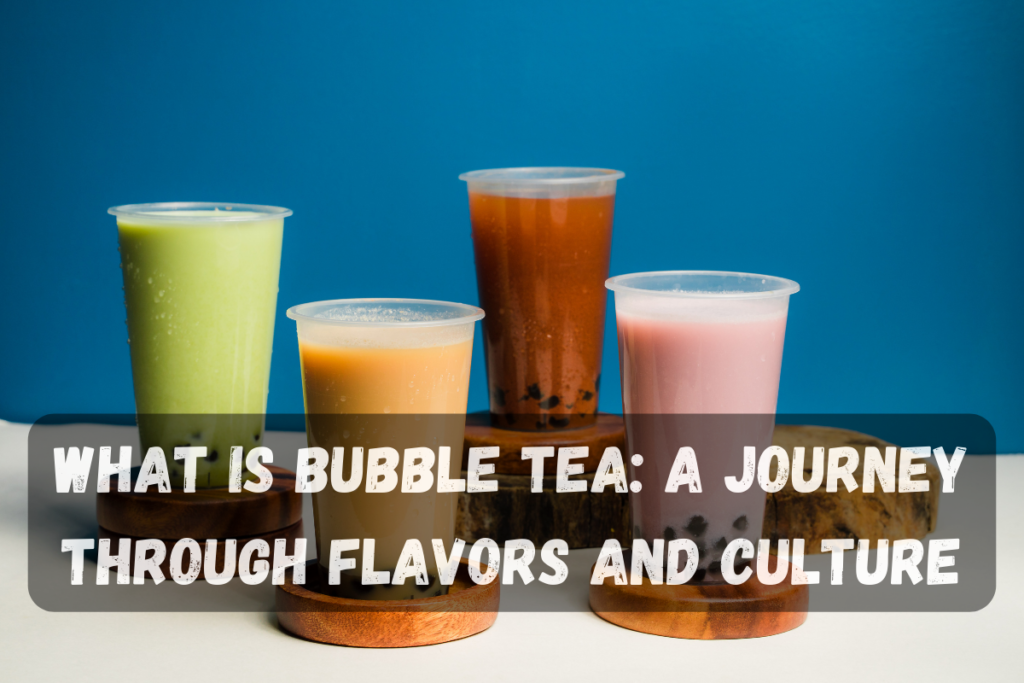Bubble tea, also known as boba tea or pearl milk tea, has taken the world by storm over the past few decades. Originating from Taiwan in the 1980s, this unique beverage has grown into a global phenomenon, beloved for its delicious flavors and the playful texture of its signature tapioca pearls. Let’s delve into the fascinating world of bubble tea, exploring its origins, ingredients, varieties, and cultural impact.
The Origins of Bubble Tea
Bubble tea’s story begins in Taiwan during the early 1980s. The invention is often credited to Lin Hsiu Hui, a tea house owner, who added tapioca pearls to her iced tea. Another claim attributes its creation to Tu Tsong-he, who experimented with adding fruit, syrup, and other ingredients to tea. Regardless of the exact origin, it quickly became popular in Taiwan, and its popularity soon spread across Asia and eventually worldwide.
Key Milestones:
- 1980s: Bubble tea emerges in Taiwan.
- 1990s: Gains popularity in neighboring Asian countries.
- 2000s: Becomes a global sensation, particularly in the United States, Canada, and Europe.
The Basic Ingredients
At its core, bubble tea is a tea-based drink, but its components can vary widely. Here are the primary ingredients that make up this delightful beverage:
1. Tea Base
The foundation of any bubble tea is the tea itself. Commonly used teas include:
- Black Tea: Provides a robust flavor and pairs well with milk.
- Green Tea: Offers a lighter, more refreshing taste.
- Oolong Tea: Known for its smooth, slightly floral notes.
2. Milk or Non-Dairy Creamer
Milk adds a creamy texture and rich flavor to the tea. Depending on dietary preferences, options include:
- Whole Milk
- Condensed Milk
- Almond Milk
- Soy Milk
- Coconut Milk
3. Sweetener
Sweetness is typically added through syrups or sugar. Popular choices are:
- Simple Syrup: A mixture of sugar and water.
- Honey
- Fruit Syrups: Such as mango, strawberry, or lychee.
4. Tapioca Pearls
These chewy, gummy pearls are the hallmark of bubble tea. Made from tapioca starch, they are boiled until they reach a desired chewy consistency and then soaked in a sugar syrup to add sweetness.
5. Ice
Ice is used to chill the drink, especially for iced versions, providing a refreshing coolness.
Varieties of Bubble Tea
Bubble tea comes in a multitude of flavors and variations, catering to diverse tastes. Here are some popular types:
1. Classic Milk Tea
A traditional favorite, made with black tea, milk, sweetener, and tapioca pearls. It’s the most common and beloved version worldwide.
2. Fruit Tea
Fruit teas use green or black tea as a base, mixed with fruit flavors like mango, passion fruit, or peach. These versions are often lighter and more refreshing.
3. Matcha Tea
Matcha bubble tea incorporates powdered green tea (matcha) with milk and sweetener. It’s a favorite for its distinct, earthy flavor and vibrant green color.
4. Taro Tea
Taro is a root vegetable that, when used in bubble tea, gives a sweet, nutty flavor and a purple hue. It’s often blended with milk for a creamy, delightful drink.
5. Slushies and Smoothies
These variations blend the ingredients with ice to create a frozen treat. They can include fruits, flavored powders, and tapioca pearls.
6. Cheese Tea
A more recent innovation, cheese tea includes a layer of whipped, salted cheese foam on top of the tea, providing a unique savory-sweet experience.
The Cultural Impact of Bubble Tea
Bubble tea is more than just a drink; it has become a cultural phenomenon with significant social and economic impacts.
1. Social Experience
Bubble tea shops are often vibrant, social spaces where people gather to relax, study, or catch up with friends. The act of sipping bubble tea has become a social activity, particularly among younger generations.
2. Cultural Exchange
Bubble tea’s global popularity has facilitated cultural exchange, introducing people worldwide to Taiwanese food culture. It’s not uncommon to find bubble tea shops in diverse cities, each offering their unique twist on the classic drink.
3. Economic Influence
The bubble tea industry has seen massive growth, leading to the proliferation of bubble tea chains and independent shops. This industry growth has created numerous job opportunities and contributed to local economies.
How to Make Bubble Tea at Home
Making bubble tea at home can be a fun and rewarding experience. Here’s a simple recipe to get you started:
Ingredients:
- 1 cup of strong brewed black or green tea
- 1/4 cup of tapioca pearls
- 1/2 cup of milk or non-dairy creamer
- 2-3 tablespoons of sweetener (sugar, honey, or syrup)
- Ice cubes
Instructions:
- Cook the Tapioca Pearls: Bring a pot of water to boil, add the tapioca pearls, and cook according to the package instructions (usually 5-10 minutes). Stir occasionally to prevent sticking. Once cooked, drain and rinse the pearls under cold water. Soak them in a sugar syrup to add sweetness.
- Brew the Tea: Brew your tea of choice and let it cool to room temperature. For a stronger flavor, use double the amount of tea leaves or bags.
- Mix the Tea: In a shaker or large glass, combine the brewed tea, milk, sweetener, and ice cubes. Shake or stir well until the ingredients are thoroughly mixed and chilled.
- Assemble the Drink: Add the soaked tapioca pearls to the bottom of a glass. Pour the tea mixture over the pearls.
- Serve and Enjoy: Insert a wide straw and enjoy your homemade bubble tea!
Bubble tea is a delightful beverage that combines unique flavors and textures, offering a refreshing treat for any time of day. Its journey from a Taiwanese innovation to a global sensation highlights its universal appeal and cultural significance. Whether you enjoy it at a local tea shop or make it at home, bubble tea is a versatile and enjoyable drink that continues to captivate taste buds around the world.



